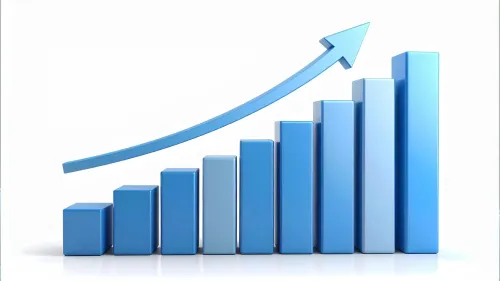Has India’s CPI inflation dropped to 0.25% in October due to GST cuts?

Synopsis
Key Takeaways
- India's CPI inflation fell to 0.25% in October.
- GST rate cuts significantly impacted pricing.
- Food inflation remained negative for five months.
- The RBI has more room for monetary policy adjustments.
- Overall, economic conditions appear favorable.
New Delhi, Nov 12 (NationPress) India's inflation rate based on the Consumer Price Index (CPI) has further decreased to 0.25% in October, as the effects of the GST rate cut led to a reduction in the prices of goods and services throughout the month, according to statistics released by the Ministry of Statistics on Wednesday.
The retail inflation has eased once more, following a significant drop to an over 8-year low of 1.54% in September, as the costs of food items and various goods fell during October.
October saw a continuation of the decline in food prices, with food inflation plunging deeper into negative territory at (-)5.02%, down from (-)2.28% in September. Food inflation has remained negative for five consecutive months, providing significant relief to household budgets.
An official statement noted: "The reduction in both headline inflation and food inflation in October is primarily due to the full month's impact of the GST decline, a favorable base effect, along with decreases in the prices of cooking oils, vegetables, fruits, eggs, cereals, footwear, and transport and communication costs."
The GST rate cuts, which took effect on September 22, are contributing to lower prices across various goods, resulting in a further decrease in the inflation rate.
Furthermore, the inflation outlook for 2025-26 appears more favorable due to significant base effects, coupled with a robust southwest monsoon, healthy kharif sowing, satisfactory reservoir levels, and ample buffer stocks of food grains.
The drop in the inflation rate provides the RBI with increased flexibility to maintain a soft monetary policy by lowering interest rates and injecting more liquidity into the economy to stimulate growth.
On October 1, the RBI’s monetary policy committee (MPC) reduced its inflation forecast for India for the financial year 2025-26 to 2.6% from 3.1% in August, primarily due to the GST rate cuts and favorable food prices.
RBI Governor Sanjay Malhotra remarked: "The recent GST rate rationalization is anticipated to decrease prices of numerous items within the CPI basket. Overall, the inflation outcomes are likely to be softer than previously projected in the August MPC resolution, mainly due to the GST cuts and favorable food prices."
After the MPC meeting, he stated that the "overall inflation outlook has become even more favorable in recent months."
Malhotra noted that the average headline inflation for 2025-26 has been revised downward from 3.7% and 3.1% projected in June and August policy meetings, respectively, to 2.6%. The headline inflation for Q4:2025-26 and Q1:2026-27 has also been adjusted downward and aligns broadly with targets, despite adverse base effects. Core inflation for this year and Q1:2026-27 is projected to remain contained.
The RBI Governor highlighted that headline CPI inflation reached its eight-year low of 1.6% year-on-year in July 2025 before rising to 2.1% in August, marking its first increase after nine months. The benign inflation conditions in 2025-26 have been primarily driven by a sharp decrease in food inflation since its peak in October 2024.
Inflation within the fuel category remained stable, ranging from 2.4% to 2.7% during June-August. Core inflation was largely stable at 4.2% in August. Excluding precious metals, core inflation stood at 3.0% in August.
Malhotra added that the current macroeconomic conditions and forecasts have created policy space for further support of economic growth.









